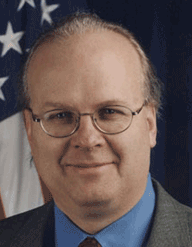Christopher Hitchens critiques the Mark Lilla essay I blogged about yesterday, and makes a botch of it.
Hitchens’s single biggest howler in this piece is here —
Lilla’s most brilliant point concerns the awful pitfalls of what he does not call “liberation theology.” Leaving this stupid and oxymoronic term to one side, and calling it by its true name of “liberal theology” instead, he reminds us that the eager reformist Jews and Protestants of 19th-century Germany mutated into the cheerleaders of Kaiser Wilhelm’s Reich, which they identified—as had Max Weber—with history incarnate.
— where he confuses 19th century “liberal theology” with 20th century “liberation theology,” which were two entirely separate movements. And the word “liberal” in “liberal theology” didn’t mean “leftist” as we might use it now (and as Hitchens uses it, perhaps not having noticed the word liberal to refer to leftist/progressive politics didn’t come into vogue until the 1930s), but rather “free thinking,” an ideal of the Enlightenment. This alone is a big honking clue that Hitchens doesn’t know what he’s talking about.
Hitchens writes, “In the first place, it is not correct to say that modernism relied on a conviction about the steady disappearance of religious belief,” as if Lilla had argued that modernism relied on a conviction about the steady disappearance of religious belief. But that is not what Lilla argued. He did not say that religious belief had to “disappear,” but that genuinely democratic government requires that religion be separated from politics. There’s a huge difference between thinking of religion as a matter of private conscience out of reach of government, and saying that it must be eliminated entirely.
Hitchens’s argument is based on the conceit that religion — all religion, mind you — is totalitarian, and all totalitarianism (including totalitarian states in which religion is persecuted) is religion. As I argued here, the real enemy of democracy and modernism is fanaticism. Fanaticism can be religious, and it can be nonreligious. Hitchens himself is a fine example of a nonreligious — nay, anti-religious — fanatic.
The Lilla essay highlighted our species’ doggedly persistent tendency to think ahead to a pre-ordained, perfect future. This tendency can be found in most religions — the Second Coming is a prime example. But it can also be found in non-religious ideologies — replacing bourgeois society with a workers’ paradise, or secular democracy spreading to all the nations of the world. A major point I took from Lilla’s essay is that this sort of utopian thinking can cloud understanding and cause nations to make some very bad decisions. For example, the belief that there is a pre-ordained arc of history that will lead all nations to democracy could lead to misreading of current events. And when utopianism gets mixed up with nationalism, events can get ugly.
Thinking about a better future is not necessarily fanatical. It’s common to hope that, some day, human society will evolve into something more peaceful and compassionate than it is now. Nor does it worry me if some people associate this future benevolent society with religious belief, such as the Second Coming of Christ, as long as the belief is held with humility, as something beyond ordinary understanding that will happen in its own way and in its own time.
But when people are so all-fired determined to make their perfect future come to pass that they are willing to violently overturn the current social order, or oppress and/or eliminate those they think stand in the way, then we’re looking at the kind of fanatical messianism that creates brutal and oppressive totalitarian regimes. I agree with Christopher Hitchens that this is an outcome to be avoided. I disagree, however, that all religion and only religion inevitably leads to this outcome.
Hitchens’s conceit is that religion causes utopian fanaticism, and that if religion were only eliminated the world would be a better place. But I say utopian fanaticism can exist without religion, and that much religion is neither utopian nor messianic. Even if all religion, and all belief in God or gods, disappeared tomorrow (which would be Hitchens’s utopian fantasy, I believe), utopian thinking would still be with us.
Rather than assume religion causes utopian fanaticism, I think it’s more accurate to say that utopian thinking breeds a certain kind of religious thinking, in which a person-God is believed to be leading his believers collectively to a glorious future. And that is, certainly, a common viewpoint of many religions. But not all religions promote that point of view. My religion doesn’t even recognize linear time except as a relative construct, for pity’s sake; past, present, and future are all One. But even in the God-centered religions, people do interpret apocalyptic prophecies as metaphors for individual, rather than global, transcendence. Or, as I was taught, the challenge of the “end times” is one of personal preparation — be “right with God” every moment, because you never know when the End is coming.
And in the modern age it is just as likely for people to think that if only their ideological principles would be put into practice, a perfect society would be born. Think of libertarians and their absolute faith in free markets to solve just about all humanity’s problems.
Many of us use the word “messianic” to describe extreme utopian faiths, whether religious or political. And you can use the word religion to refer to non-religious matters, also. If I say Alice followed her diet religously I would mean that she followed her diet conscientiously, not that she was dieting because God told her to.
Hitchens may be confused by the common practice of using of the word religion as a synonym for faith. I argued here and here why religion and faith are not synonymous. I refuse to call myself a “person of faith” even though I am religious, and I think all religious people should do likewise. When you define the totality of religion as nothing but “faith,” and when faith in anything becomes indistinguishable from “religion,” then the word religion itself has lost any useful purpose and ought to be retired.
But religion is a great many things other than faith, and faith can be about a great many things other than religion. And when we’re clear about that, then it becomes obvious why Christopher Hitchens is a blathering fool.


